The Ultimate Guide to Italian Greyhound: Everything You Need to Know
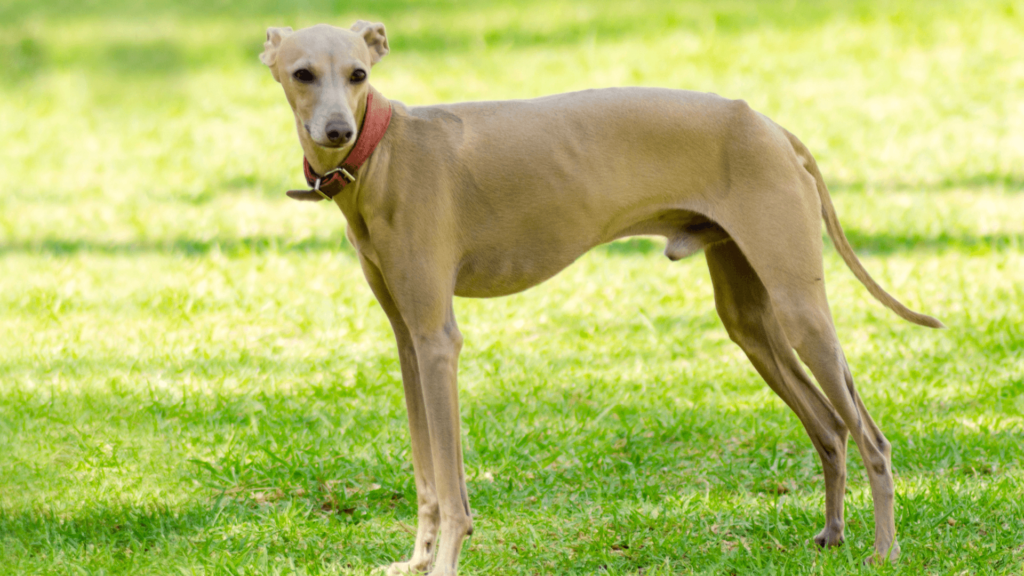
Overview of the Italian Greyhound
- Overview of the Italian Greyhound
- History of the Italian Greyhound
- Physical Characteristics of the Italian Greyhound
- Personality Traits of the Italian Greyhound
- Health and Care Needs of the Italian Greyhound
- Training and Exercise Requirements of the Italian Greyhound
- Living Arrangements for the Italian Greyhound
- Adaptability of the Italian Greyhound
- Nutrition Requirements of the Italian Greyhound
- Common Health Issues in the Italian Greyhound
The Italian Greyhound is an exquisite breed that captivates the hearts of countless canine admirers. Its lithe body and graceful movements set it apart from the rest. When mulling over bringing an Italian Greyhound into your household, it is essential to possess an extensive comprehension of its characteristics and needs.
This article will give you a comprehensive overview of the Italian Greyhound, covering its history, physical traits, and personality traits. Upon completion, you will have a greater appreciation of this extraordinary breed and have the knowledge to attend to them suitably, should you decide to welcome one into your home.
The Italian Greyhound boasts an enchanting past, as it can be traced back to ancient times, with proof of its existence stretching back two millennia. Initially bred to be the companions of nobles and aristocrats, they were greatly appreciated for their beauty and loving personalities.
The Italian Greyhound has persisted in entering people with its stylishness and amiable temperaments and is now a cherished family pet and much-loved show dog. Knowing its historical importance enables us to cherish the Italian Greyhound's lineage and the characteristics that have made it so prized over the ages.
Concerning physical characteristics, the Italian Greyhound is a sight to behold. Its sleek and slender physique conveys elegance and poise. Its fur is short and comes in a variety of hues, such as shades of fawn, azure, and black. Its eyes are grand and expressive, while its ears are delicate and often fold back, providing it with a lovable aspect.
The Italian Greyhound is petite, with a usual height of 13 to 15 inches at the shoulder, and a weight between 7 and 14 pounds. Even with its diminutive size, it is agile and swift, making it an excellent participant in canine sports, such as lure coursing. The Italian Greyhound's physical features contribute to its allure and popularity, making it a favorite among dog aficionados all over the world.
History of the Italian Greyhound
Thousands of years of history have granted the Italian Greyhound an illustrious legacy. This lithe and sleek breed was highly prized in ancient Egypt and often featured in artwork. During the Renaissance, Italian nobles lavished these graceful pooches with adoration, leading to the breed's name. Sadly, the 19th century saw a decrease in the breed's population, but dedicated enthusiasts worked hard to revive the pureblooded Italian Greyhounds.
Today, they are admired for their historical significance and beguiling qualities.
A symbol of beauty and grace, the Italian Greyhound has been memorialized in art and literature throughout history. From ancient tombs to Renaissance paintings, this regal breed has left its mark on culture. But in addition to its beautiful appearance, the Italian Greyhound is also valued for its enduring loyalty and companionship. Understanding the breed's history helps to appreciate the unique traits that have made them cherished companions for so many centuries.
A tale of resilience and tenacity, the Italian Greyhound's story is one of strength and perseverance. This breed has overcome many obstacles to remain one of the oldest dog breeds in existence. Through admiration and devotion, these elegant dogs have remained beloved companions for centuries. The long and varied history of the Italian Greyhound proves that they are truly a timeless breed.
Physical Characteristics of the Italian Greyhound
A truly unique breed, the Italian Greyhound stands at an impressive 13 to 15 inches tall at the shoulder. This small, sleek, and athletic dog is characterized by its lean and muscular body, deep chest, and tucked-up abdomen.
Showcasing an elegant look, the breed has a long and narrow head with a slightly domed skull and tapered muzzle. Its large, expressive eyes range in color from dark brown to amber, and its ears are folded back and set high on the head. The Italian Greyhound's short and smooth coat comes in an array of colors and patterns and requires only occasional brushing to remain in top condition.
The Italian Greyhound is known for its long, slim legs, which provide it with great agility and speed. This light-bodied breed has a remarkable jumping ability and is capable of reaching impressive speeds, making it a great choice for activities such as lure coursing and agility trials.
Despite its small size and delicate frame, the Italian Greyhound is surprisingly strong and resilient. All of the physical characteristics of the Italian Greyhound come together to create a breed that is both beautiful and capable.
Personality Traits of the Italian Greyhound
The affectionate disposition of the Italian Greyhound makes them a one-of-a-kind breed. They create strong connections with their owners and crave human interaction. Known for being gentle, tender, and devoted, these dogs also display a playful and energetic nature, making them perfect for an active lifestyle. Even though they are small in size, their personality is larger than life and they will not hesitate to show it.
Though they can be independent at certain moments, they can also be quite delicate and can become overwhelmed in certain environments, so it is important to offer them a secure and loving home. Furthermore, they get along well with children and other pets, though they may seem a bit hesitant when around unfamiliar people.
Early socialization and positive reinforcement training are fundamental to helping them become well-rounded and confident dogs. All in all, the personality traits of the Italian Greyhound make them an ideal companion for those who value their unique combination of devotion, liveliness, and sensitivity.
The Italian Greyhound's smartness is another remarkable attribute. They are quick learners and can easily grasp new commands and tricks. Although, their autonomous personality may make them a bit obstinate, so it is necessary to be patient and consistent when training them.
Moreover, they have a strong inclination towards chasing small animals, so it is imperative to make sure they are adequately monitored and taught to prevent this behavior.
It is also essential to remember that they are tender and do not respond to harsh training methods, so positive reinforcement techniques that involve rewards and praise are the best approach. By providing the right training and socialization, the Italian Greyhound can become a well-mannered canine companion.
Their intelligence and willingness to please make them a joy to train and interact with. All in all, the personality traits of the Italian Greyhound make them an exceptional and intelligent breed, perfect for any home.
Health and Care Needs of the Italian Greyhound
Cherishing Italian Greyhounds' health and meeting their particular needs are essential for their wellbeing. Vet visits should be regular to check on their physical condition and detect any potential issues. Vaccines and preventive measures for parasites are an important part of keeping them safe from diseases and pests. As their skin is fragile, they should be given a secure environment free of sharp objects and other dangers.
Dental hygiene is essential too since they are prone to tooth decay and gum disease.
Regular brushing and professional teeth cleaning should be part of their oral care routine. Mental stimulation is also important as they are intelligent and need exercises to fight boredom and destructive behaviors.
Puzzle toys and obedience training can aid in this. Furthermore, these pups rely on social interaction and companionship so a loving and nurturing environment should be provided. Taking care of Italian Greyhounds' health and their needs is key to ensuring they live a content and fulfilling life.
Training and Exercise Requirements of the Italian Greyhound
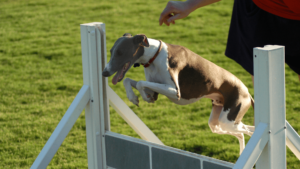
Physical activity and mental stimulation are essential for the well-being of an Italian Greyhound. This energetic and agile breed requires regular exercise and training to stay happy and healthy. Training should be consistent and positive, with rewards and reinforcement techniques.
Starting from a young age is recommended, as a well-trained greyhound puppy will grow up to be a well-mannered adult. Exercise should include daily walks, playtime in a safe area, and interactive games that stimulate their intelligence and speed.
When it comes to training an Italian Greyhound, perseverance is essential. This breed can be sensitive and may require a delicate approach. Positive reinforcement, such as treats and compliments, is highly effective in motivating them to learn.
Consistency is also crucial, as greyhounds thrive in an environment with unambiguous rules and structures. Training should focus on basic obedience commands like sit, stay, and come, as well as leash discipline and socialization skills. It is recommended to participate in obedience classes or seek the guidance of a professional dog trainer to make sure proper training techniques are used.
In addition to training, exercise is critical for an Italian Greyhound's physical and mental welfare. This breed has a natural inclination to sprint and pursue, so providing them with ample chances to expend energy is essential.
Daily walks should be part of their regimen, but they will also benefit from off-leash playtime in a securely enclosed space. Interactive toys, such as puzzle puzzles or treat-dispensing toys, can aid in keeping their minds stimulated and thwart ennui.
It is important to tailor the exercise routine to the greyhound's age and individual needs, as younger dogs may necessitate more vigorous exercise while older dogs may need shorter, more frequent strolls.
Living Arrangements for the Italian Greyhound
It's essential to give the Italian Greyhound a secure and safe habitat to guarantee their health and well-being. Due to their slender build and small size, it is vital to make certain that their living space is free from sharp objects and hazardous plants.
Furthermore, these pooches have a taste for warmth and coziness, so offering them comfortable bedding and a warm atmosphere is a must. Designating a place for them to take a break and sleep will help them feel safe and content.
Acquiring an outdoor environment is not usually the best way for an Italian Greyhound to live. They are vulnerable to extreme temperatures and can quickly become too cold or too hot. Consequently, providing them with a backyard or a specific spot for them to explore and stay active is recommended. Still, it's essential to carefully supervise them while they are outside to protect them from any injury since they tend to pursue small animals.
These social canines desire to be part of their family's daily life and to have close contact with their human partners. For that reason, they should live in a house where they will be showered with love and attention.
If your daily routine is too hectic or you work long hours, it may be beneficial to consider adopting another Italian Greyhound or a compatible breed to keep them company. All in all, giving them a loving and safe residence is essential to ensure their contentment.
Adaptability of the Italian Greyhound
The remarkable adjustability of the Italian Greyhound renders them suitable for any environment. From cramped city apartments to sprawling backyards, this breed can acclimate to any living situation.
Their small stature and minimal exercise requirements make them perfect for urban living, while their love of outdoor activities makes them a great fit for those with larger spaces. The adaptability of the Italian Greyhound makes them a great companion for any canine enthusiast.
As well as adjusting to their living arrangements, the Italian Greyhound's flexibility extends to their interactions with other animals. They are renowned for their amiability towards other pets, including cats and dogs, making them a great choice for multi-pet homes.
Their friendliness and sociability allow them to form strong bonds with both humans and animals, creating a harmonious atmosphere. If you are already living with pets or are looking to add a furry friend to your family, the Italian Greyhound will make the transition easy.
The Italian Greyhound also possesses the ability to cope with a variety of temperatures. Despite their delicate appearance, they are surprisingly hardy and can easily withstand a wide range of climates.
Whether you are living in a hot and humid region or a cold and snow-filled one, the Italian Greyhound's adaptability will ensure they remain comfortable. Although it is important to provide suitable protection during extreme weather conditions to guarantee their wellbeing.
The Italian Greyhound's trainability is another remarkable trait. These dogs are intelligent and eager to please, making them swift learners. They can easily accommodate different training techniques and respond favorably to positive reinforcement.
Whether you are teaching them basic commands or more advanced tricks, the Italian Greyhound's adaptability and willingness to learn will make the process a breeze. With patience, constancy, and rewards, you can mold them into well-behaved and obedient companions.
Nutrition Requirements of the Italian Greyhound
Fueling an Italian Greyhound with the right nutrition is key. For these slim and elegant canines, it's important to provide a balanced and nourishing diet that meets their fast metabolism. Lean proteins, such as chicken, turkey, and fish, are beneficial for building muscles and general health. Adding a variety of fruits and veggies can give them essential vitamins, minerals, and antioxidants.
As this breed has a tendency to gain weight, monitoring their calorie consumption is important. Working with a vet or professional dog nutritionist can create a personalized meal plan that fits the specific needs of your Italian Greyhound.
Keeping adequate hydration is also crucial for an Italian Greyhound's well-being. Ensuring access to clean and fresh water is necessary, particularly during hot weather or after physical activity. Investing in a stainless steel or ceramic water bowl can help keep the water cool and ward off bacteria. As some may have sensitive stomachs, it's essential to introduce dietary changes slowly and watch their response.
Additionally, be aware of any food sensitivities or allergies to avoid any digestive issues or allergic reactions.
In addition to a nutritious diet, Italian Greyhounds may benefit from the inclusion of supplements to support their overall health. Adding omega-3 fatty acids, such as fish oil, can promote a healthy coat and skin, while joint supplements like glucosamine and chondroitin can help with mobility.
Before giving any supplements, it's best to consult a vet to ensure safety and appropriateness. By providing the right nutrition, hydration, and any necessary supplements, you can help your Italian Greyhound to enjoy the best possible health and well-being.
Common Health Issues in the Italian Greyhound
The overall well-being of Italian Greyhounds can be impacted by some health issues. Owners should be aware of these potential concerns and take proactive steps to ensure their pet's health and happiness. Common health issues that affect this breed include dental complications, allergies, and joint problems.
Regular dental care, nutrition, and exercise can contribute to reducing these health issues and promoting an Italian Greyhound's health.
Dental issues are a common health issue in the Italian Greyhound. Their small jaws and size can lead to tooth decay, gum disease, and tartar build-up. Avoiding these problems involves brushing their teeth and providing appropriate chew toys.
Additionally, it is important to schedule routine dental check-ups with a veterinarian for early detection and treatment.
Allergies can also occur in this breed. They may be triggered by certain foods, environmental factors such as pollen or dust mites, or grooming products. Symptoms can include itching, redness, and ear infections. To manage allergies, it is important to identify and avoid the allergens that cause the reactions.
In some cases, medication or special diets may be necessary.
Joint issues are prevalent in Italian Greyhounds, particularly as they age. Luxating patella, hip dysplasia, and arthritis are all conditions that may affect this breed. To reduce the risk of joint issues, it is important to maintain a healthy weight, exercise regularly, and have a balanced diet.
Moreover, providing soft bedding and limiting strenuous activities can help minimize strain on their joints. Regular veterinarian check-ups can help monitor and manage any joint issues.

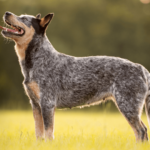
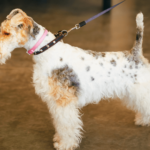
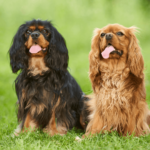
Leave a Reply